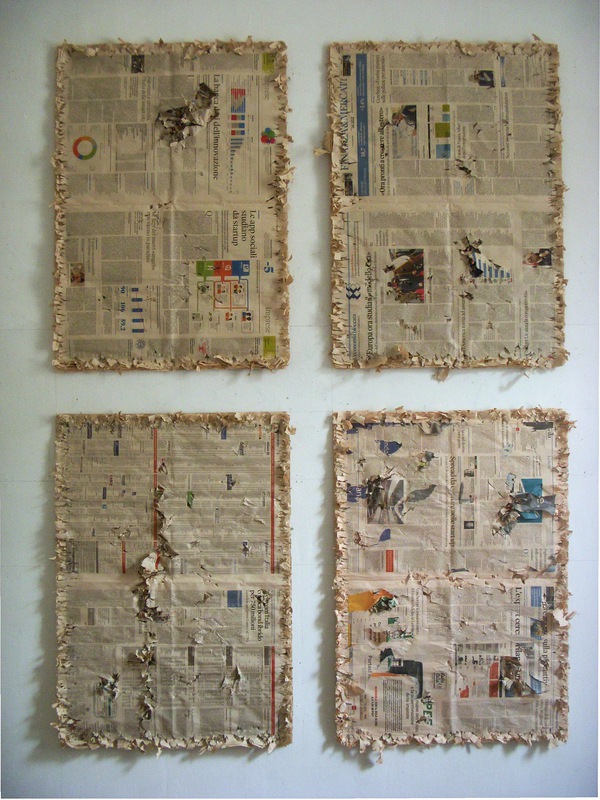Building Utopia and Abstraction
dal 19/6/2013 al 18/9/2013
Segnalato da
Giuseppe Armenia
Paola Di Bello
Radomir Damnjan
Zuzanna Janin
Tony Just
Jacopo Mazzonelli
Domenico Piccolo
Bert Theis
Magda Tothova
Alexander Wolff
Pierre Poggi
Jacopo Prina
Anna Orlikowska
19/6/2013
Building Utopia and Abstraction
Federico Bianchi Contemporary, Milano
Lavori sul tema quasi tutti inediti. Di: Giuseppe Armenia, Paola Di Bello, Radomir Damnjan, Zuzanna Janin, Tony Just, Jacopo Mazzonelli, Domenico Piccolo, Bert Theis, Magda Tothova, Alexander Wolff, Pierre Poggi, Jacopo Prina, Anna Orlikowska.

---english below
Federico Bianchi Contemporary Art è lieta di presentare la mostra collettiva Building Utopia and Abstraction in galleria, che inaugurerà il giorno 20 giugno 2013 alle ore 18.30 in Via Imbonati 12 a Milano. Saranno presenti lavori, quasi tutti inediti, di Giuseppe Armenia, Paola Di Bello, Radomir Damnjan, Zuzanna Janin, Tony Just, Jacopo Mazzonelli, Domenico Piccolo, Bert Theis, Magda Tothova, Alexander Wolff, Pierre Poggi, Jacopo Prina, Anna Orlikowska.
To construct a utopia is always an act of negation toward an existing reality, a desire to transform it.
Leszek Kolakowski, 1968 – La dimensione dell'arte astratta trova psicologicamente un senso nella ricerca di un mondo visionario, nuovo e modellato secondo forme che siano corrispondenti a degli ideali al di là della semplice dimensione formale/reale delle cose.
Costruire astrazione, o meglio astrarre in generale, porta a una visione utopica (nel senso di auspicata) degli spazi (nelle istallazioni partecipative di Bert Theis o nelle trasformazioni dei campi di calcio Pierre Poggi), oppure porta a una radicalizzazione delle forme del reale (nei lavori di Alexander Wolff, Radomir Damnjan e Jacopo Prina). Si parte dalla prospettiva del reale che si deforma nei lavori “natural-mente” di Paola Di Bello e nei dipinti di Domenico Piccolo per arrivare ad un oggetto o un concetto che si astrae esso stesso nei lavori di Giuseppe Armenia e Zuzanna Janin.
La cancellazione nella pittura di Tony Just si rifà al concetto base di astrazione, come realtà non immediatamente riconoscibile, perché come ben evidenziato da Hilton Kramer in “Abstaction and Utopia”, gli artisti che si rifanno all'astrazione non mettono in discussione l'esistenza del mondo materiale. I'obiettivo è quello di cambiarlo - per eliminare le imperfezioni al fine di apportare un'armonia ideale - ad un tempo sociale una spirituale, in ogni sfera terrena dello sforzo umano (“it did not question the existence of the material world. Its goal was change it - to eliminate its imperfections in order to etablish an ideal harmony, at once social an spiritual, in every sphere of earthly human endeavor.”). Tutto ciò è bel visibile nelle opere di Magda Tothova e Anna Orlikowska.
Citando sempre Kramer: “whereas theosophical belief is essentially religious in nature, utopian thought is fundamentally political, for it seks to realize its model of human perfection by bringing about a radical transformation of society and its institutions. while both envision an ideal future, it is in the nature of utopian thought to imagine that the particular "heaven" it hypothesizes can be created on earth.” mentre il credo teosofico è essenzialmente di natura religiosa, il pensiero utopico è fondamentalmente politico, perché tende a realizzare il suo modello di perfezione umana, portando una trasformazione radicale della società e delle sue istituzioni. Mentre entrambi immaginano un futuro ideale, è proprio della natura del pensiero utopico immaginare un particolare "paradiso" che si ipotizza possa essere creato sulla terra.
L'astrazione ha dunque in questa mostra un preciso valore ideale che innalza, trascende e amplifica la sfera dell'arte.
Inaugurazione 20 giugno ore 18.30
Federico Bianchi Contemporary
via Imbonati, 12 - Milano
Orario: mar-sab 15-19
Ingresso libero
---english
Federico Bianchi Contemporary Art is glad to present the collective exhibition Building Utopia and Abstraction, opening on June 20, 2013 (6.30 p.m.) in via Imbonati 12, Milan, featuring works by Giuseppe Armenia, Paola Di Bello, Radomir Damnjan, Zuzanna Janin, Tony Just, Jacopo Mazzonelli, Domenico Piccolo, Bert Theis, Magda Tothova, Alexander Wolff, Pierre Poggi, Jacopo Prina, Anna Orlikowska, almost all shown for the first time.
To construct a utopia is always an act of negation toward an existing reality, a desire to transform it.Leszek Kolakowski, 1968 – The dimension of abstract art finds a psychological sense in the search for a visionary world, new and moulded after shapes to match ideals, beyond the mere formal/real dimension of things.
Building abstraction, or better to generally abstract, leads to a utopic (wished for) vision of the spaces (in Bert Theis’ active installations or in Pierre Poggi’s football fields transformations), or to a radicalization of the forms of reality (in Alexander Wolff, Radomir Damnjan e Jacopo Prina’s works).
It starts from the perspective of reality deformed in the works "natural-mente" by Paola Di Bello and Domenico Piccolo’s paintings to get to an object or a concept that is abstracted itself in Giuseppe Armenia and Zuzanna Janin’s works.
The cancellation in Tony Just’s painting goes back to the basic concept of abstraction, as a not immediately recognizable reality, because as Hilton Kramer well underlines in "Abstaction and Utopia", abstract artists don’t question the existence of the material world, their goal was change it - to eliminate its imperfections in order to establish an ideal harmony, at once social an spiritual, in every sphere of earthly human endeavour. This is quite visible in the works of Magda Tothova and Anna Orlikowska.
To keep quoting Kramer: “whereas theosophical belief is essentially religious in nature, utopian thought is fundamentally political, for it seks to realize its model of human perfection by bringing about a radical transformation of society and its institutions. while both envision an ideal future, it is in the nature of utopian thought to imagine that the particular "heaven" it hypothesizes can be created on earth.”
Abstraction has therefore in this exhibition a definite ideal value that rises, amplifies and transcends the sphere of art.
Opening 20 June 6.30pm
Federico Bianchi Contemporary
Via Imbonati, 12 - Milan
Hours: Tue-Sat 15-19
free admission



